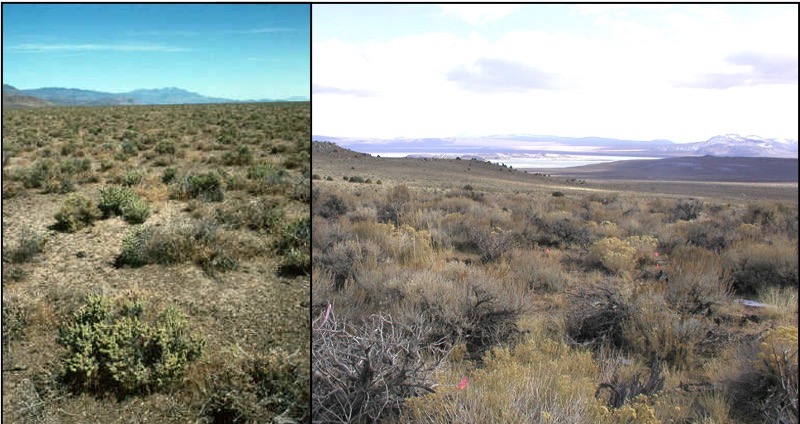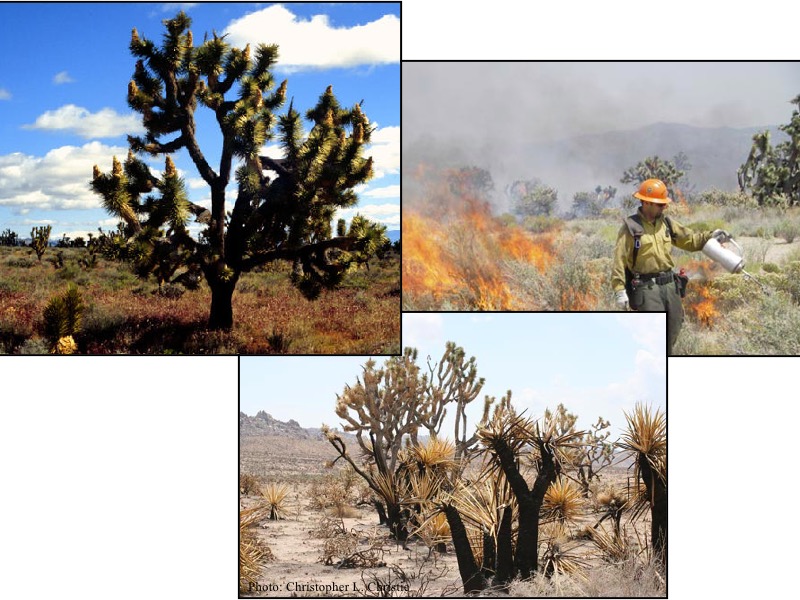Effects of Non-native, Invasive Species
Despite the harsh climate, some non-native species have become invasive in desert systems.
Tamarix spp. (tamarisk or salt-cedar) has been widely planted. It was introduced into the west in the 1800s as a source of wood, shade, and erosion control. Since then, Tamarix species have taken over many riparian areas, displacing the native willows and cottonwoods.

Annual grasses from Europe and Eurasia have colonized large tracks of desert, threatening desert species by promoting fire. Most desert species do not tolerate fire. It is thought that fire was rare in deserts in the past due to the discontinuous fuels. (Bare spaces between shrubs would prevent any fire started by lightening from spreading far.) The presence of the introduced annual grasses provides a thicker, more continuous layer of dead fuels in the desert, helping fire both start and spread.
In the Great Basin, it is cheatgrass (Bromus tectorum) that fills in the interspaces between sagebrush plants. Great Basin sagebrush (Artemisia tridentata) does not tolerate fire, and has been eliminated from large area of the Great Basin by repeated fires.

In the Mojave Desert, it is primarily Bromus rubens (red brome) that has colonized the desert. As noted previously, most desert plants are intolerant of fire. The fire-response of the Joshua tree (Yucca brevifolia), however, is not unclear. In some places, fire appears to completely kill the Joshua tree; in other places Joshua trees have resprouted after fire. The cause of that variation in fire response is not known yet.
